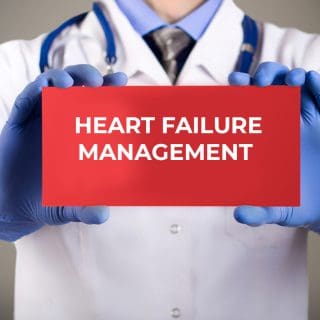
Telemedicine is a rapidly growing branch of healthcare delivery that uses technology to connect patients remotely with doctors or other health professionals. This technology can revolutionize healthcare delivery by making it easier for people to get appointments and access specialists. And because telemedicine is so fast and convenient, it can help people stay healthier without going to the doctor as often.
This article highlights how telemedicine can revolutionize the healthcare delivery model and how it can aid physicians with managing multiple patients simultaneously.
Introduction – What Is Telemedicine?
Telemedicine is an outpatient practice that uses telecommunications technologies to improve the delivery of healthcare services—rapidly evolving to improve access to healthcare for patients across the globe.
Video conferencing and broadband technologies have made it possible for doctors and patients to interact virtually anywhere. It has also opened new possibilities for treating conditions that would be difficult or impossible to treat in person due to distance or other factors. For example, telemedicine can diagnose illnesses remotely, provide ongoing treatment advice, and monitor patient conditions. In addition, remote care allows families of hospitalized patients to keep close tabs on their loved ones without leaving their homes.
With the ever-growing trend of distance learning and eLearning, telemedicine is quickly becoming a staple in healthcare delivery. This technology allows for more efficient patient care. Still, it also allows providers to be closer to their patients who may reside in rural areas or with other health challenges that pose difficulty for traditional medical visits. Telemedicine can provide a precious resource for those facing difficult circumstances, such as battlefield veterans and cancer patients receiving chemotherapy treatments.
How does it work?
There are several ways that telemedicine can be used in healthcare delivery. Over the past few years, telemedicine has been used mainly to provide consultation and treatment for cancer, heart disease, and diabetes.
Telemedicine also allows for more direct communication between doctors and patients, improving accuracy and efficiency in medical treatments. Plus, because telemedicine is so accessible, it can be used to help those who may not have access to traditional health care systems. By using telemedicine, providers can reach a broader range of patients and reduce wait times for appointments.
There are many benefits to using telemedicine in healthcare delivery, and it has already revolutionized some areas of the industry. Technology is growing increasingly accessible, which will continue to play an essential role in improving patient care.
What are the advantages of telemedicine?
Telemedicine is a delivery model of healthcare that enables patients to receive care from healthcare professionals over the internet.
The advantages of telemedicine include:
Remote Patient Monitoring – how does this telemedicine work for chronic disease management?
It can be hard to manage chronic health conditions on your own, but with the help of telemedicine, you can stay in touch with your doctor without having to leave your home. RPM is a growing trend in chronic disease management. By providing real-time data on a patient’s condition, remote patient monitoring can help clinicians make better decisions about treating chronic diseases and monitor patient outcomes.
What is RPM?
Remote Patient Monitoring (RPM) is a telemedicine service that enables healthcare providers to electronically monitor patients who are not physically present in the doctor’s office or clinic. This service can be used to manage chronic diseases such as diabetes and heart disease, as well as other conditions such as hypertension, asthma, and PTSD.
How does RPM work for chronic disease management?
RPM is a telemedicine technology that uses video or audio communication to provide real-time information on the status of a patient’s health. By providing this information, RPM can help doctors and patients manage chronic diseases more effectively.
There are a few types of RPM that can be used for chronic disease management.
The first type is telemedicine consultation. This type of RPM allows doctors to consult with specialists over video or audio equipment to get more comprehensive care for their patients. This is helpful for patients who live far away from doctors or have difficulty getting regular appointments.
The second type of RPM is telehealth coaching. This type of RPM allows doctors to monitor and coach their patients on their health goals remotely. This helps patients stay on track and reach their health goals more quickly.
Finally, there are telemedicine diagnostics. This RPM type allows doctors to diagnose a patient’s condition over video or audio equipment. This is helpful for patients who do not want to visit a doctor or who do not have access to regular medical services.
What are some benefits of using RPM?
There are many benefits of using RPM for managing chronic diseases.
– reducing medication errors since doctors can monitor patients’ medications more accurately;
– improving communication between doctors and patients since RPM allows for real-time notifications of changes in health;
– reducing the risk of mistreatment or neglect of patients who are unable to travel to see a doctor; and
– providing greater access to healthcare for those who live in rural or remote areas.
Conclusion
As technology increases in our personal and professional lives, there has been a corresponding increase in telemedicine-enabled healthcare delivery. Telemedicine can offer a cost-effective way for people who cannot visit a doctor or clinic in person or want to see a doctor but prefer not to leave their homes. In addition, telemedicine can help avert medical emergencies by allowing patients and doctors to connect remotely and take appropriate action if an emergency arises. For all these reasons, we must explore the possibilities posed by telemedicine-enabled healthcare delivery to capitalize on its many benefits.
Become a Partner
Support
Portals